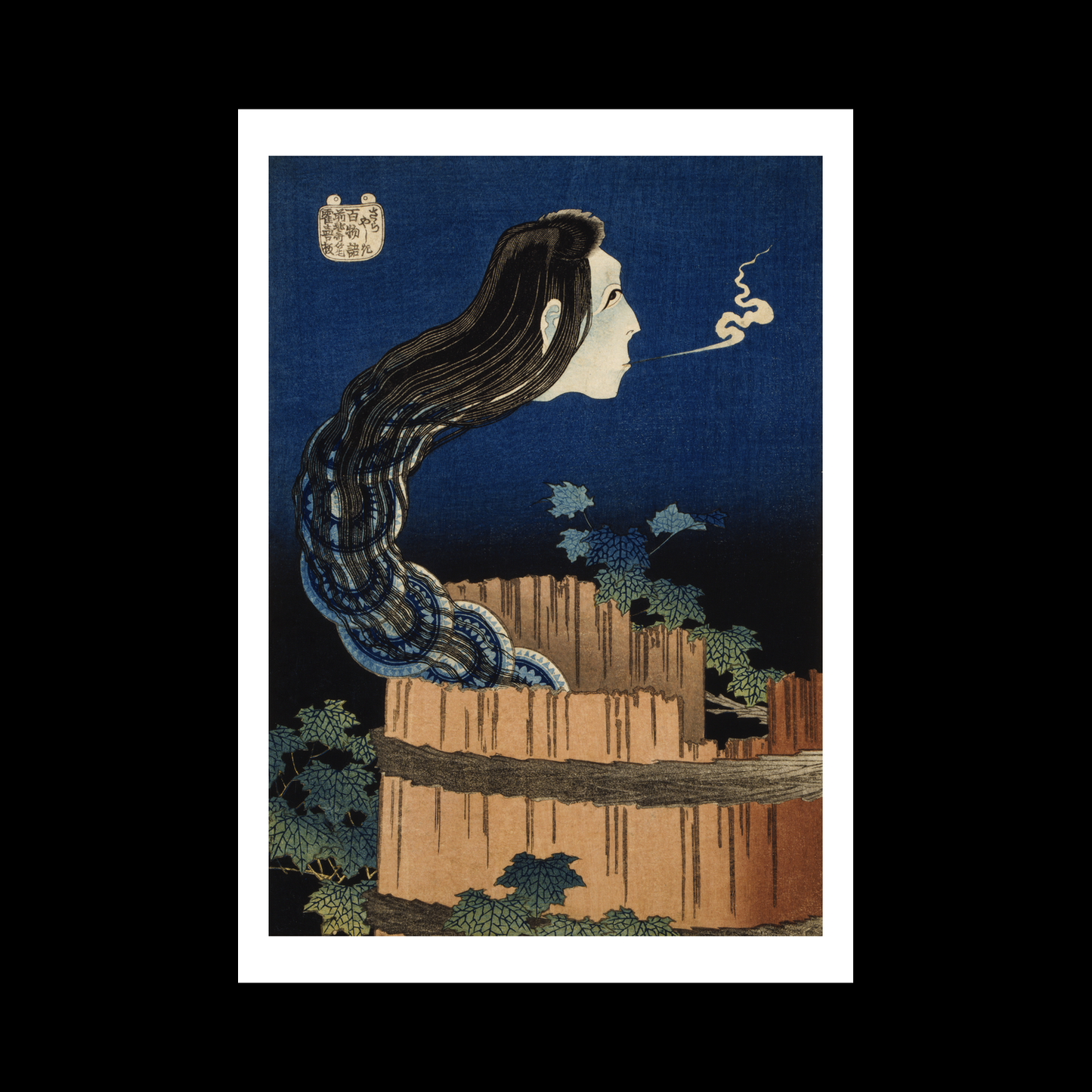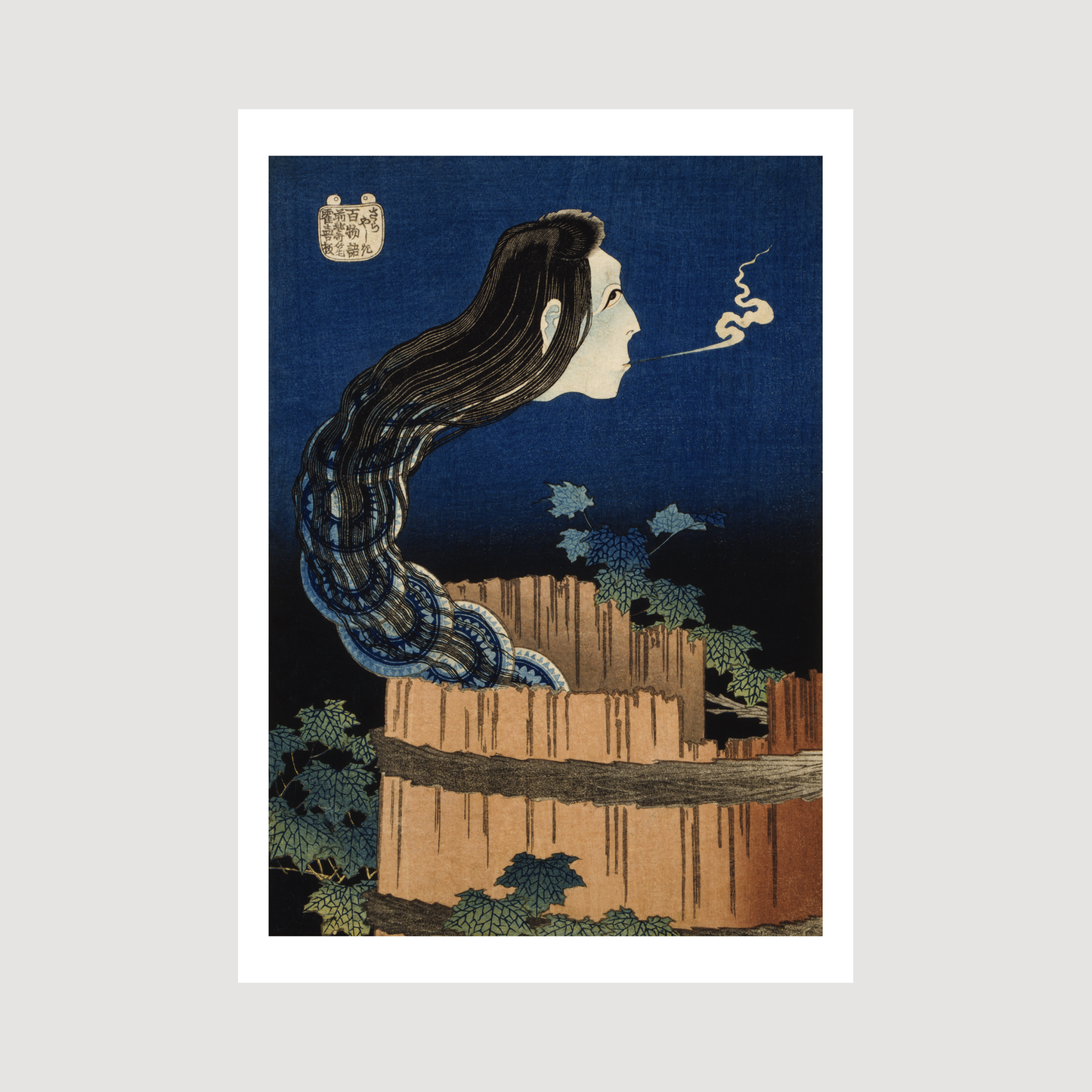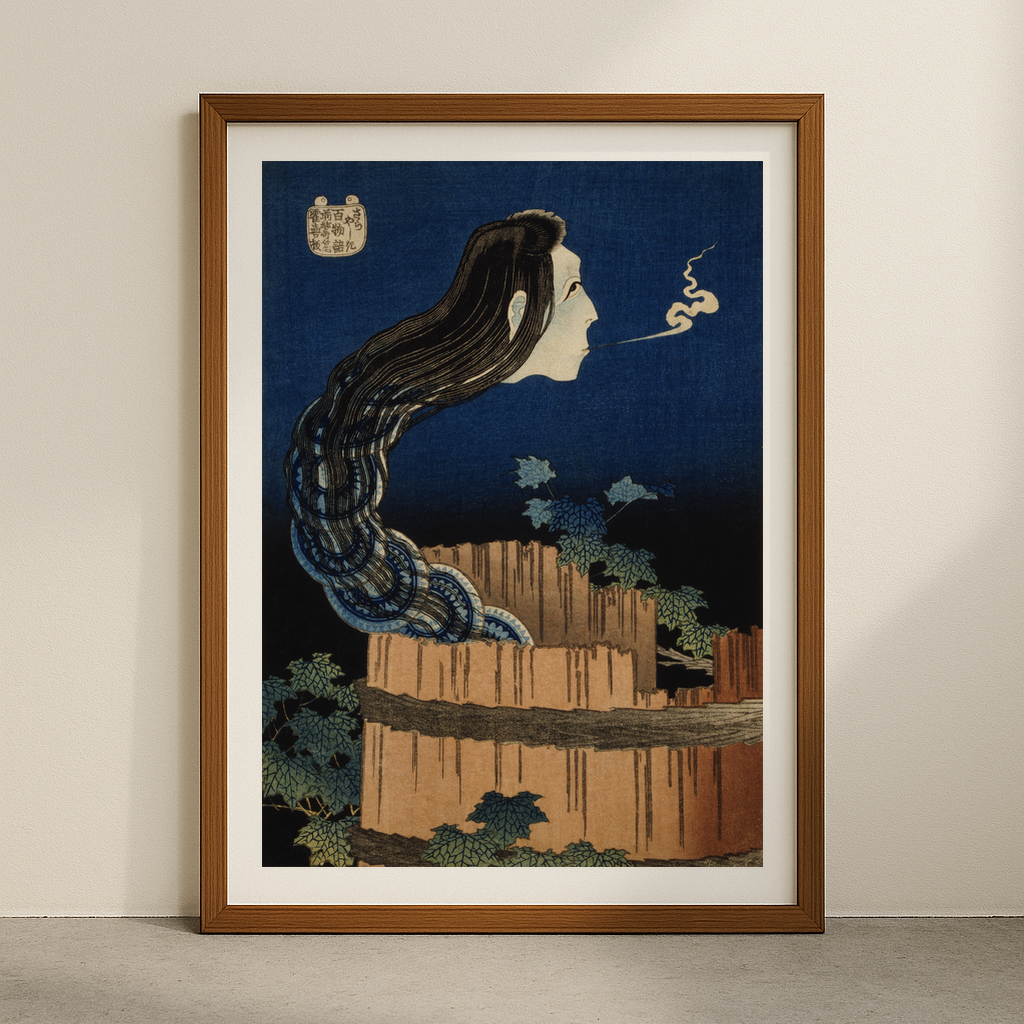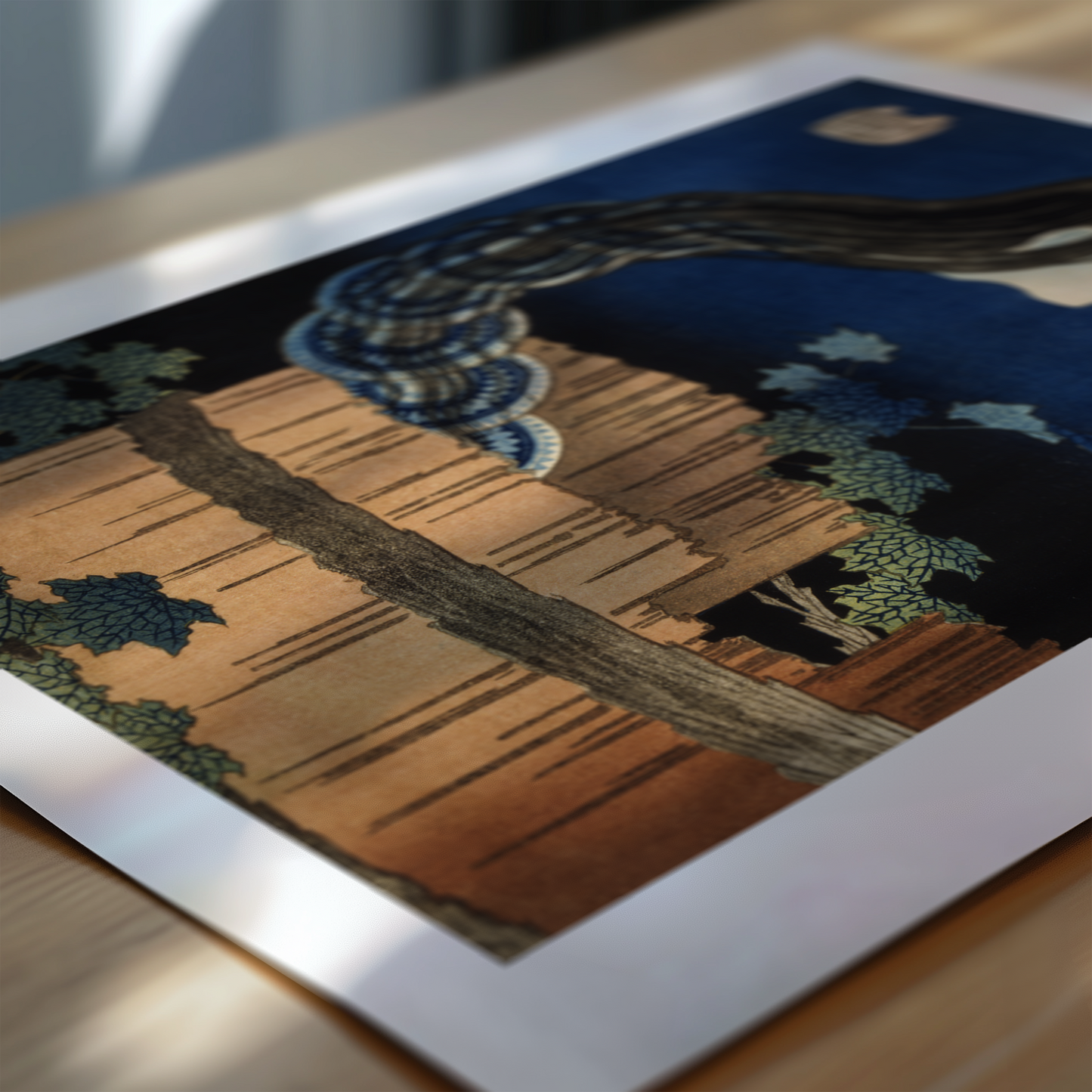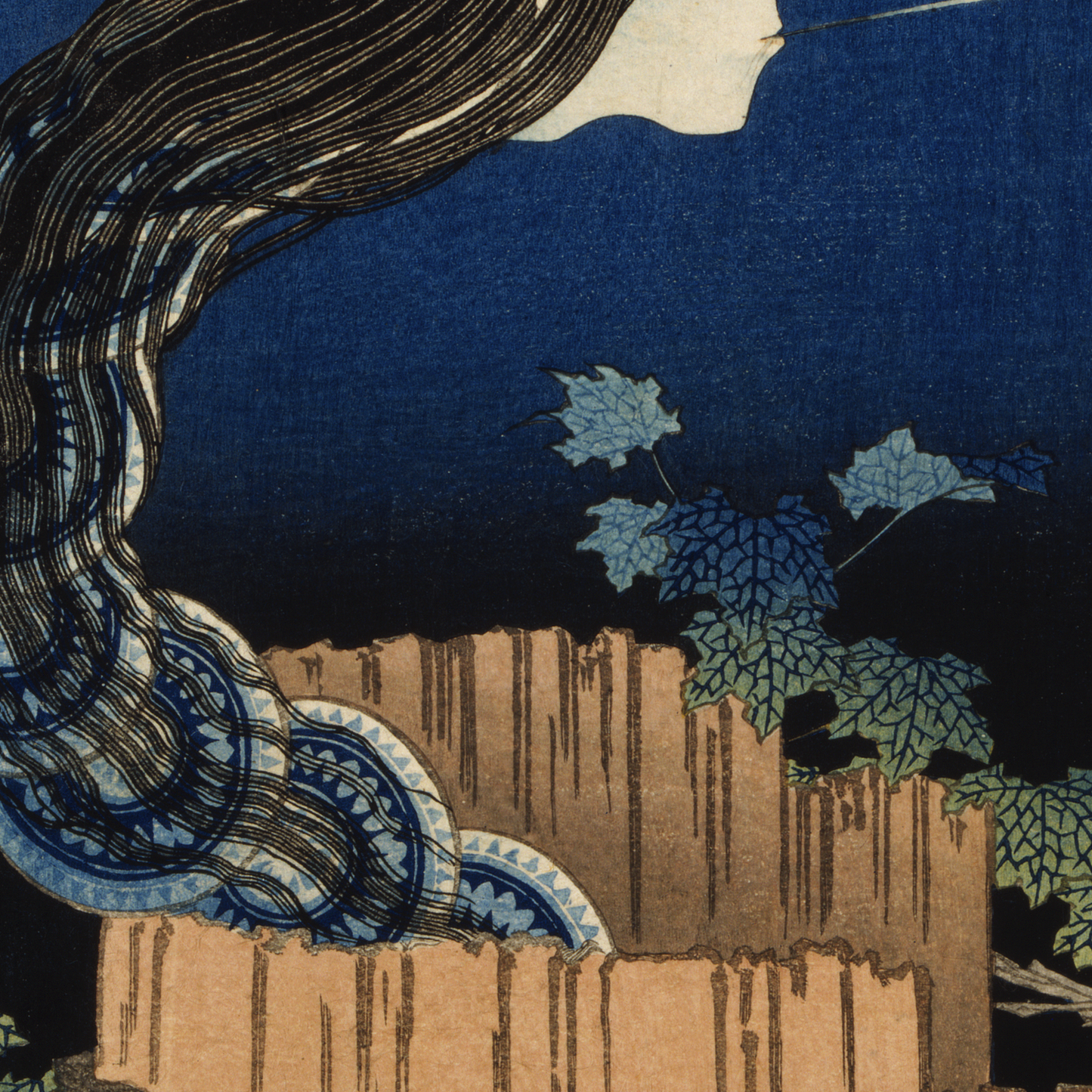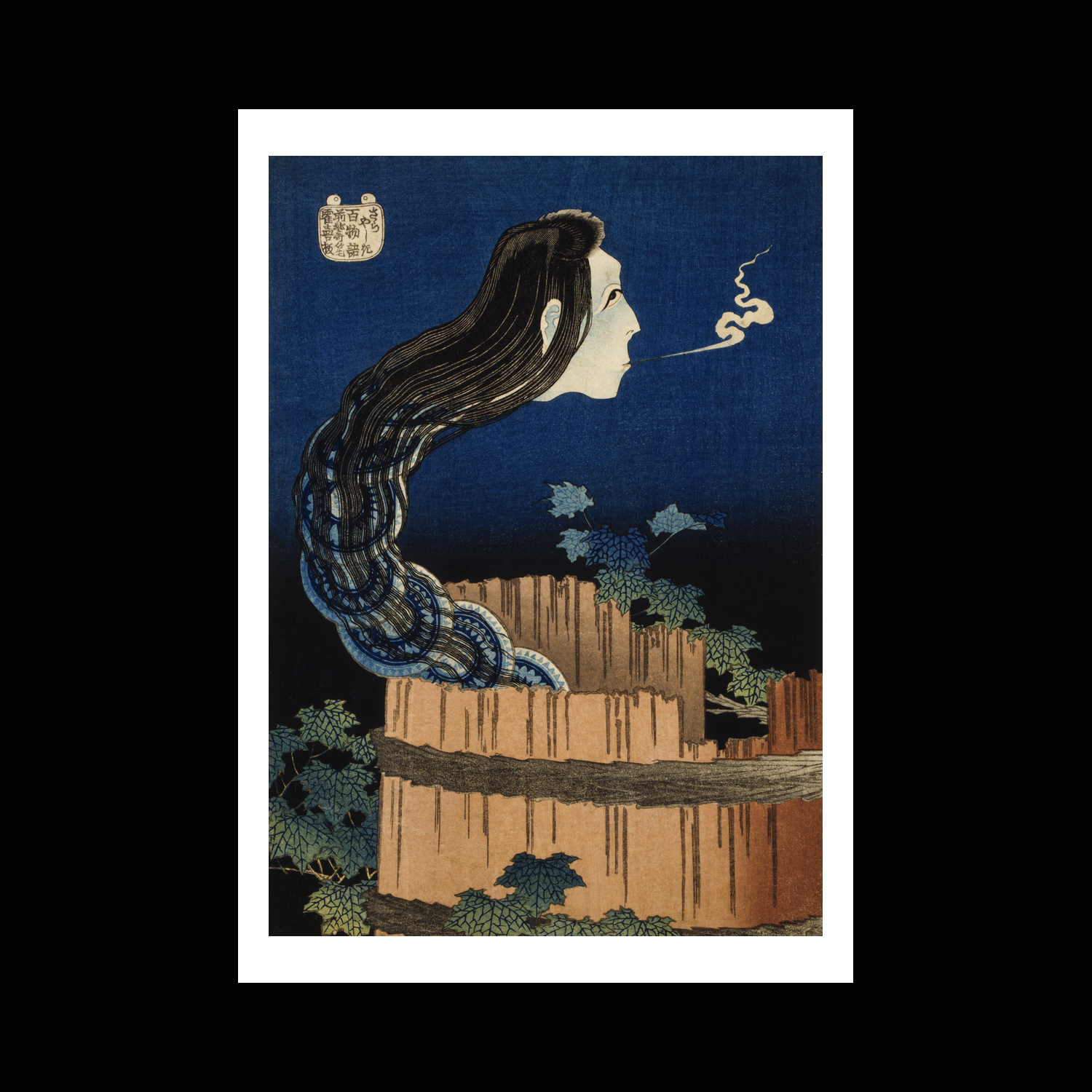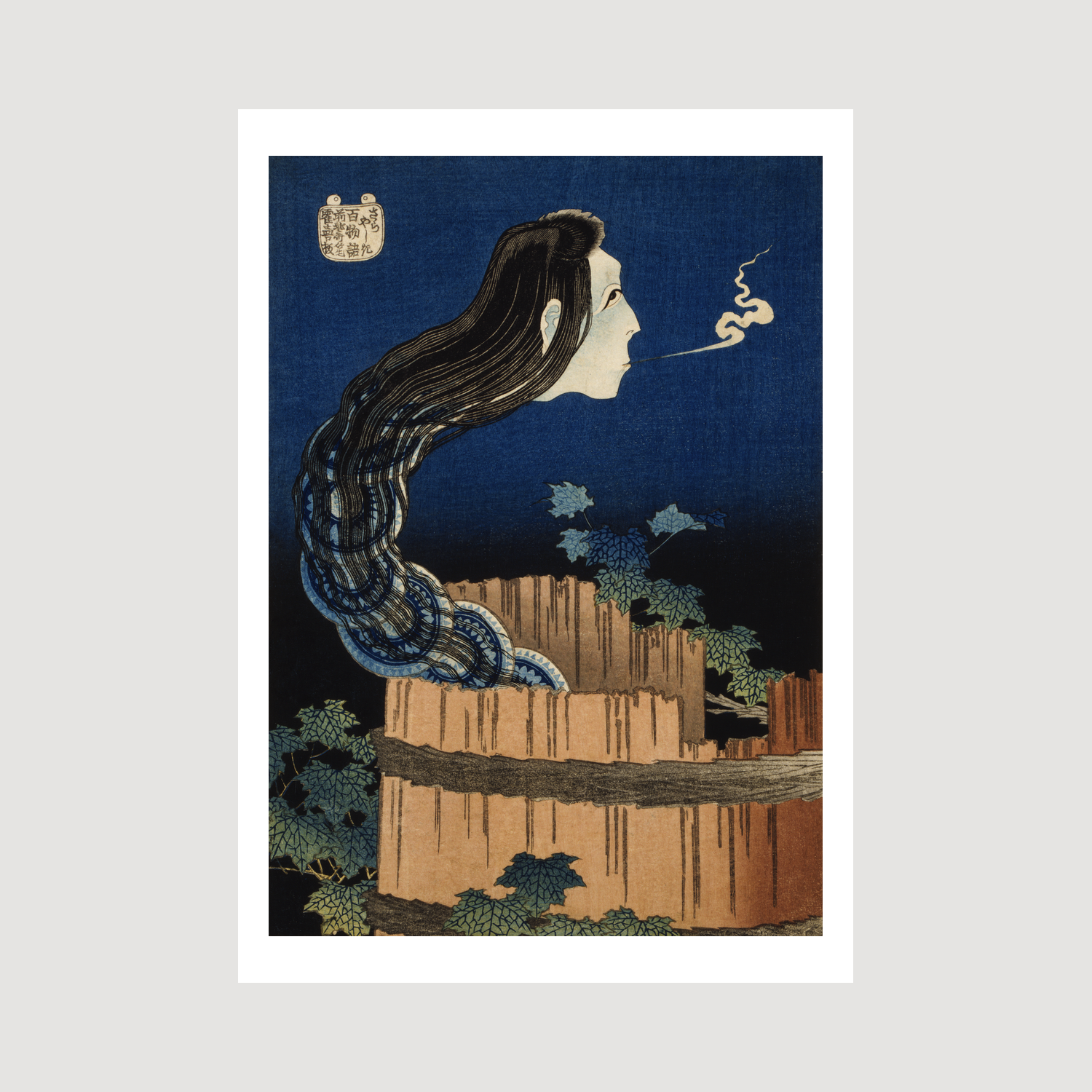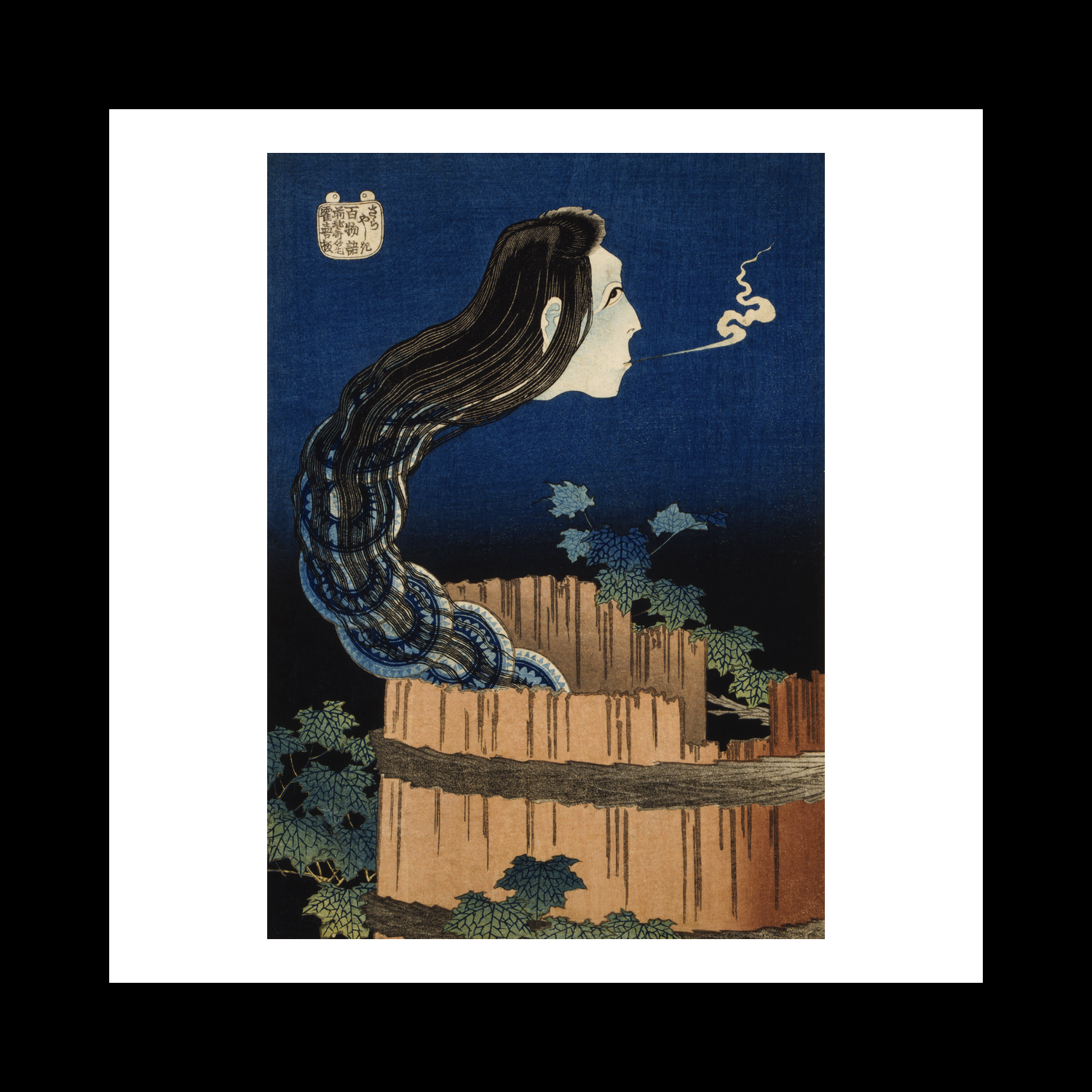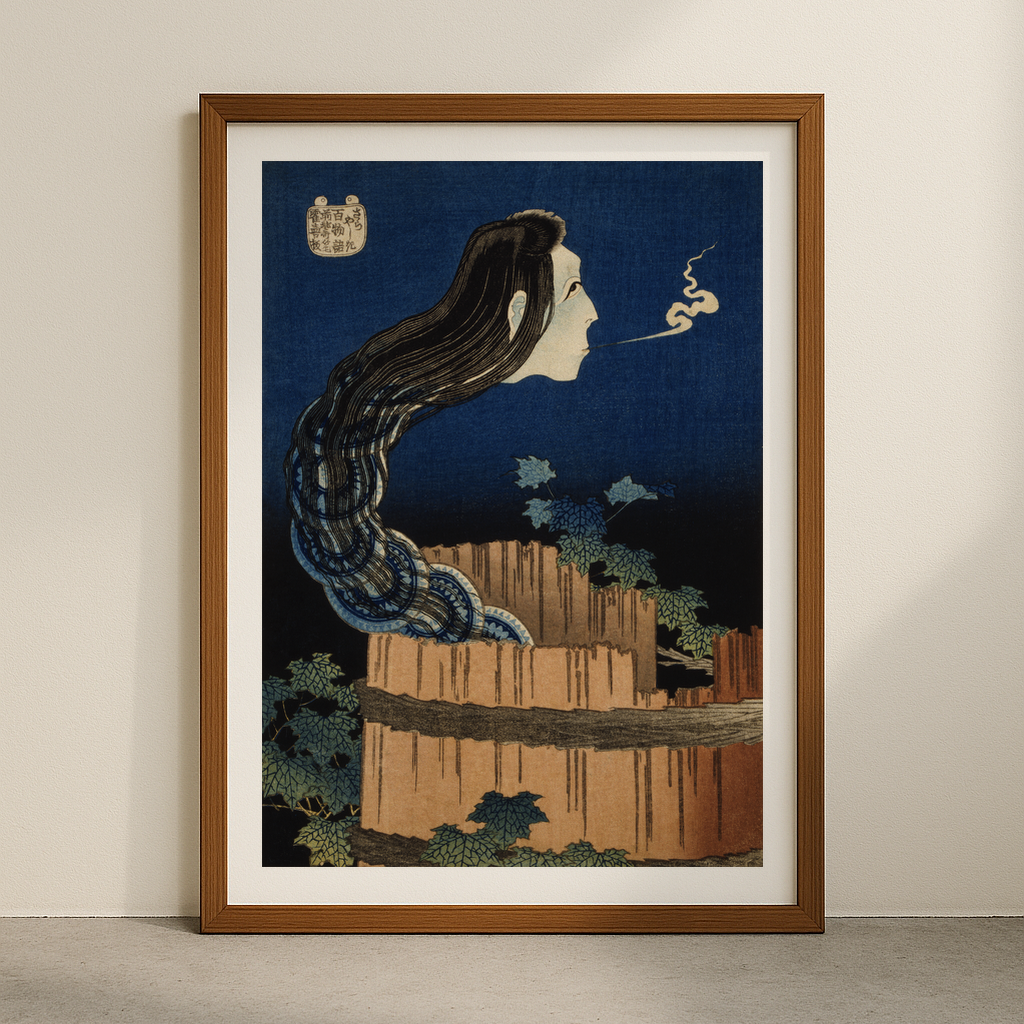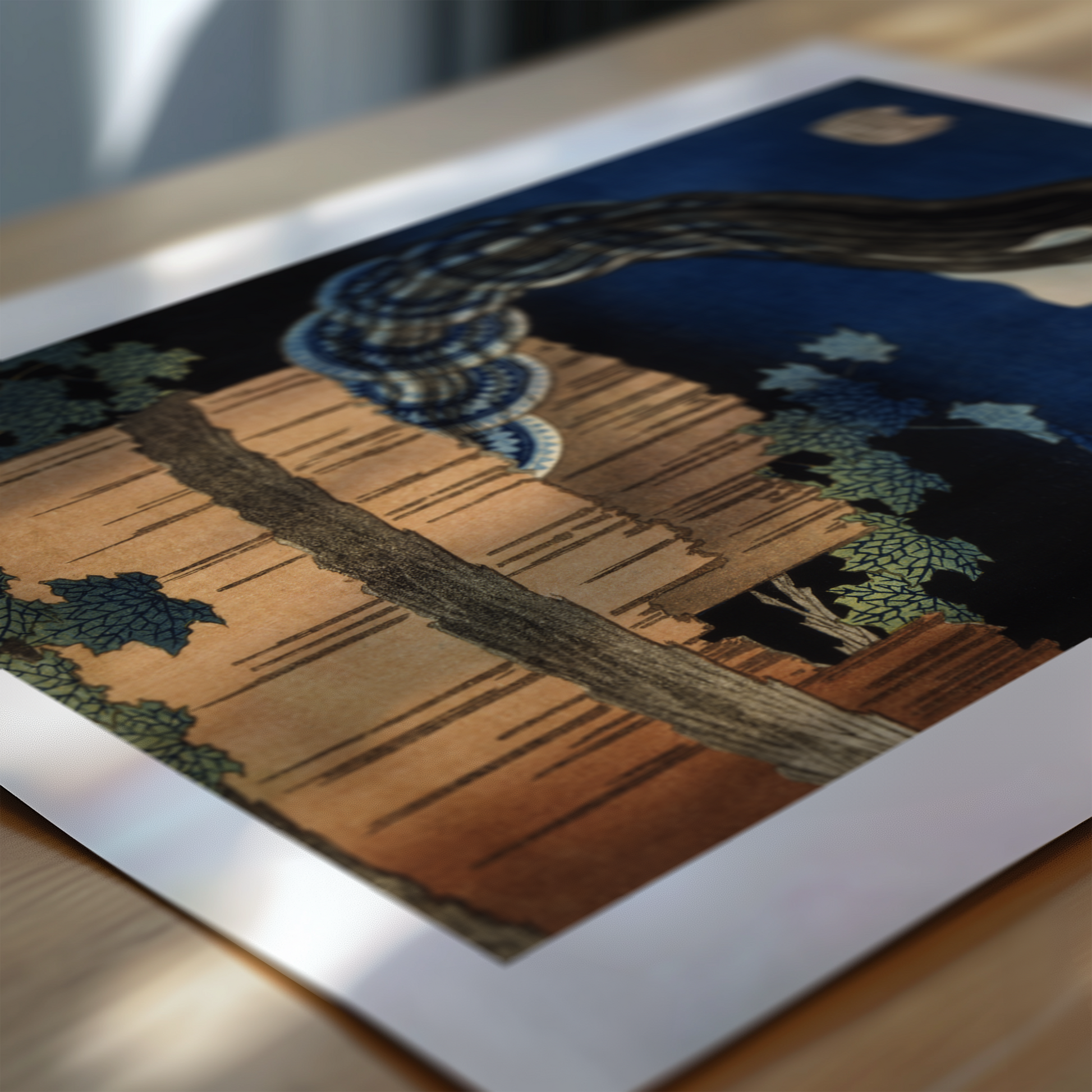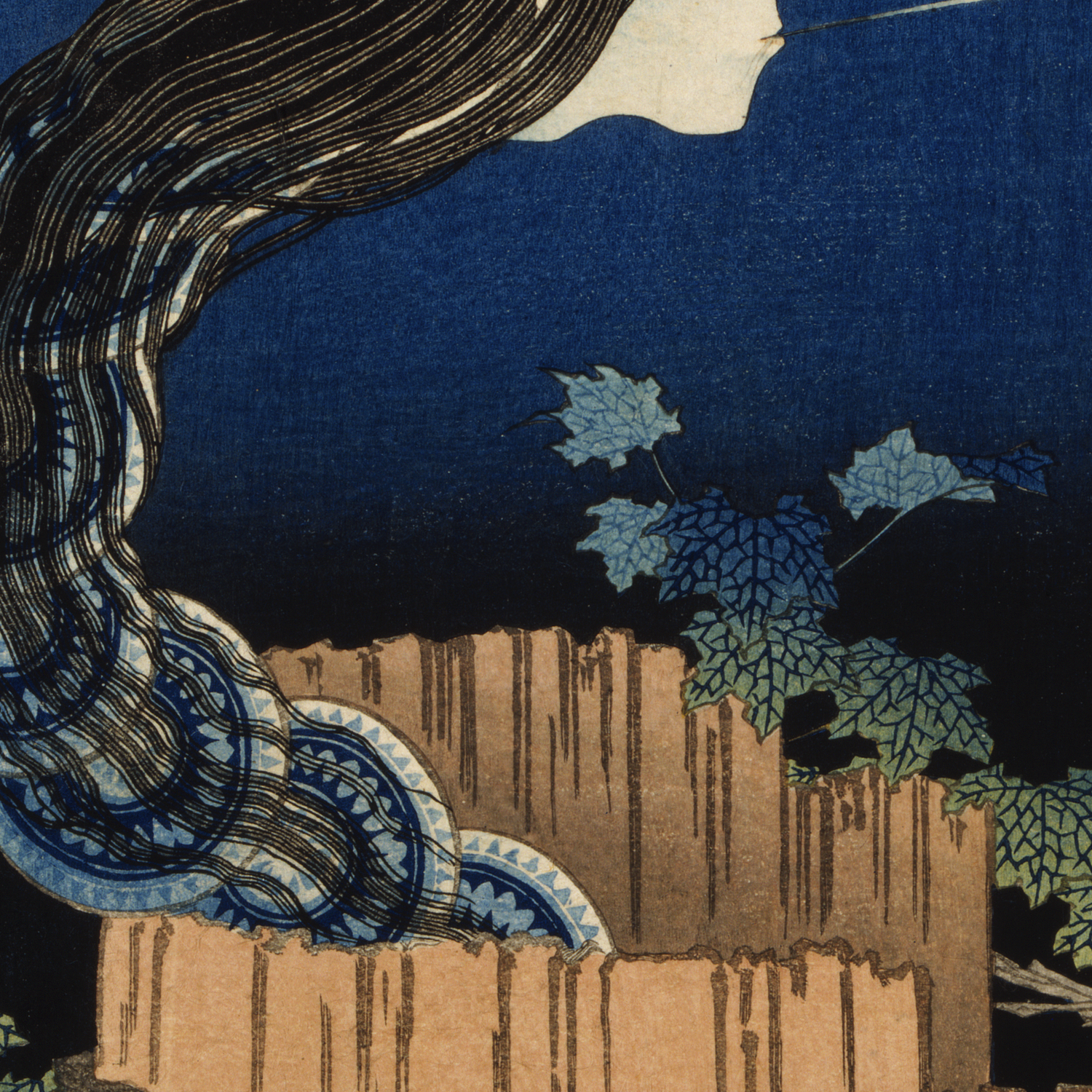1
/
of
6
The Plate Mansion
The Plate Mansion
Regular price
£12.45 GBP
Regular price
Sale price
£12.45 GBP
Taxes included.
Quantity
Couldn't load pickup availability
"The Plate Mansion" showcases Hokusai's masterful command of the Ukiyo-e style, depicting the haunting tale of Okiku, a servant wrongly accused of losing one of ten precious plates. The illustration captures her ghostly form emerging from a well, rendered in the distinctive woodblock printing technique that characterises Japanese art of the Edo period. The composition balances delicate linework with dramatic shadows, creating an atmosphere of supernatural tension.
Hokusai, best known for his "Thirty-six Views of Mount Fuji" series, created this piece during Japan's period of isolation, when ghost stories (kaidan) were particularly popular among the merchant class. The tale of Okiku resonated deeply with audiences, reflecting themes of injustice, loyalty, and the supernatural beliefs prevalent in Japanese culture. The story tells of her tragic death and subsequent haunting, where she counts plates nightly, always stopping at nine before releasing a bone-chilling shriek.
The artist's interpretation emphasises the psychological rather than the grotesque aspects of the ghost story. Through careful use of negative space and flowing lines typical of Ukiyo-e, Hokusai creates a sense of movement and ethereal presence. The piece exemplifies how Japanese artists of the period used supernatural subjects to comment on social hierarchies and moral obligations, while demonstrating the sophisticated printing techniques that would later influence European Impressionists and Art Nouveau movements.
This work holds particular significance as it represents Hokusai's contribution to the kaidan genre during a time when such stories were not merely entertainment but served as vehicles for social commentary and cultural preservation in Edo-period Japan. His technical excellence in depicting the supernatural while maintaining artistic restraint makes this piece particularly noteworthy in the ghost story illustration tradition.
View full details
Hokusai, best known for his "Thirty-six Views of Mount Fuji" series, created this piece during Japan's period of isolation, when ghost stories (kaidan) were particularly popular among the merchant class. The tale of Okiku resonated deeply with audiences, reflecting themes of injustice, loyalty, and the supernatural beliefs prevalent in Japanese culture. The story tells of her tragic death and subsequent haunting, where she counts plates nightly, always stopping at nine before releasing a bone-chilling shriek.
The artist's interpretation emphasises the psychological rather than the grotesque aspects of the ghost story. Through careful use of negative space and flowing lines typical of Ukiyo-e, Hokusai creates a sense of movement and ethereal presence. The piece exemplifies how Japanese artists of the period used supernatural subjects to comment on social hierarchies and moral obligations, while demonstrating the sophisticated printing techniques that would later influence European Impressionists and Art Nouveau movements.
This work holds particular significance as it represents Hokusai's contribution to the kaidan genre during a time when such stories were not merely entertainment but served as vehicles for social commentary and cultural preservation in Edo-period Japan. His technical excellence in depicting the supernatural while maintaining artistic restraint makes this piece particularly noteworthy in the ghost story illustration tradition.
